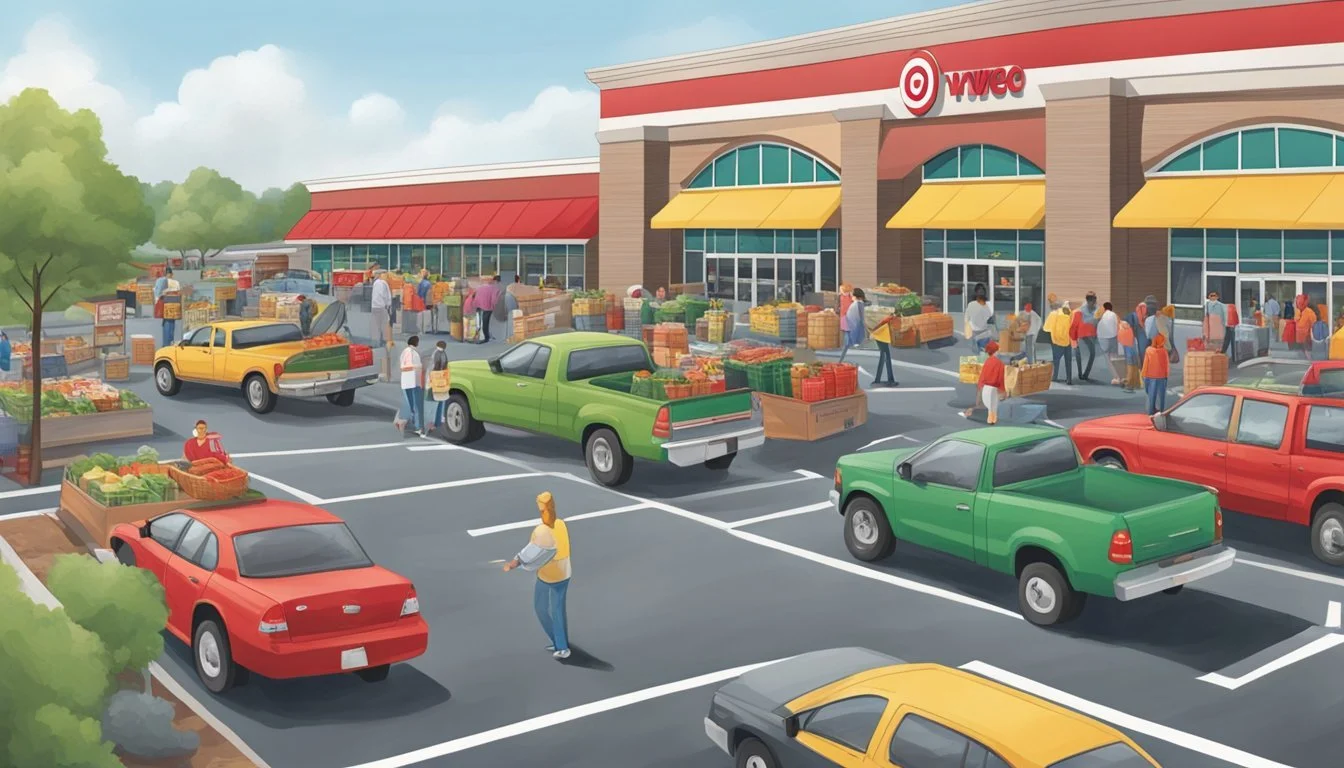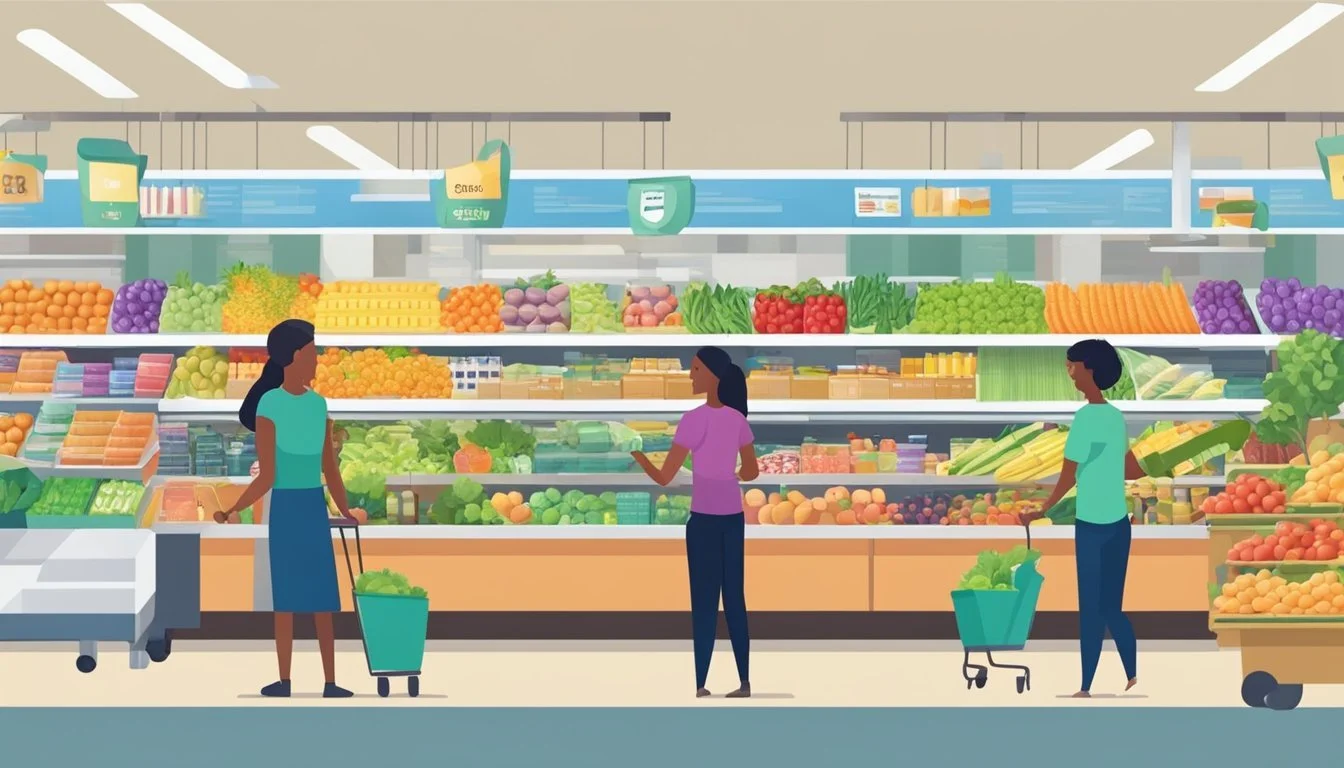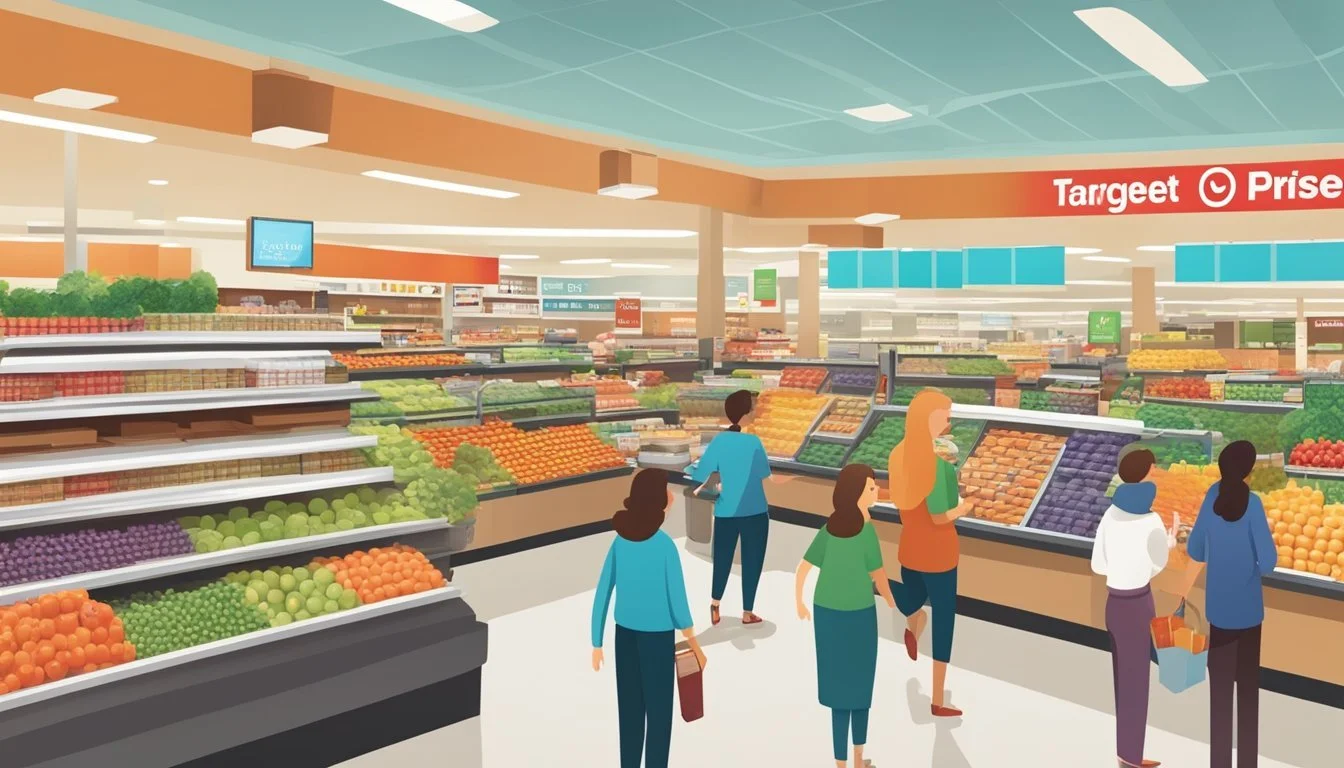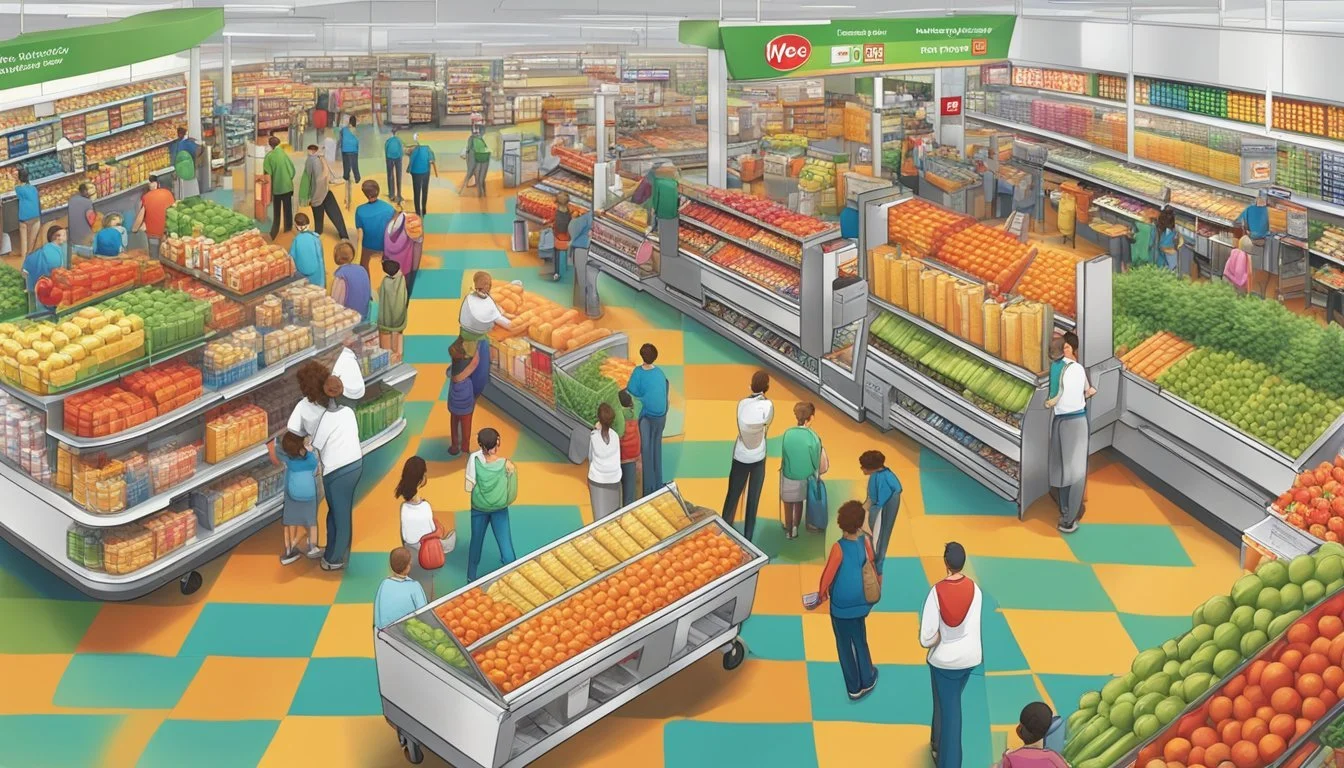Target vs Hy-Vee
A Comprehensive Comparison of Price, Quality, and Selection
Target and Hy-Vee are two popular grocery store chains in the United States, each with its own strengths and loyal customer base. Target, known for its wide range of products beyond groceries, offers competitive pricing and stylish home goods. Hy-Vee, a Midwestern staple, focuses primarily on groceries and emphasizes customer service.
When comparing these two stores, several factors come into play, including price, product selection, and overall shopping experience. Target generally offers lower prices on everyday items, with prices averaging about 11 percent below the market average. This can lead to significant savings for shoppers over time.
Both stores have their unique advantages. Target excels in providing a diverse shopping experience with its mix of groceries, clothing, and home goods. Hy-Vee, on the other hand, specializes in groceries and often features in-store dining options and pharmacies. The choice between the two ultimately depends on individual preferences and specific shopping needs.
Overview of Target and Hy-Vee
Target and Hy-Vee are prominent retail chains in the United States, each with a distinct focus and customer base.
Target is a general merchandise retailer founded in 1902. It operates over 1,800 stores across the country, offering a wide range of products including groceries, clothing, electronics, and home goods.
Hy-Vee, established in 1930, is primarily a supermarket chain with over 240 locations. It is headquartered in West Des Moines, Iowa and maintains a strong presence in the Midwest.
Both stores have expanded their grocery offerings in recent years. Target has increased its fresh food and produce sections, while Hy-Vee has developed more general merchandise options.
Target is known for its trendy, affordable products and clean store layouts. Hy-Vee emphasizes customer service and community involvement, with many stores featuring in-house restaurants and specialty departments.
Pricing strategies differ between the two. Target often uses its REDcard program to offer discounts, while Hy-Vee frequently runs sales and promotions on groceries.
Hy-Vee is employee-owned, which can impact its operational decisions. Target, in contrast, is a publicly-traded company.
Both chains have embraced technology, offering online shopping, curbside pickup, and delivery services to meet evolving consumer needs.
History and Expansion
Target and Hy-Vee have taken different paths in their growth trajectories. Target expanded nationally from its Minnesota roots, while Hy-Vee focused on building a strong regional presence in the Midwest.
Target's Growth
Target's history began in 1902 as Goodfellow Dry Goods in Minneapolis. The company rebranded as Target in 1962, launching its first discount store. Target rapidly expanded across the United States in the following decades.
By the 1990s, Target had stores in most states. The retailer focused on offering trendy, affordable products to attract middle-class consumers. Target's expansion continued into the 2000s, reaching all 50 states by 2018.
Today, Target operates over 1,800 stores nationwide. The company has also invested heavily in e-commerce and same-day delivery services to compete with online retailers.
Hy-Vee's Regional Presence
Hy-Vee started as a small general store in Beaconsfield, Iowa in 1930. The company grew steadily, focusing on the Midwest region. Hy-Vee expanded into neighboring states like Illinois, Minnesota, and Missouri over the decades.
The grocery chain remained privately held and employee-owned, allowing for steady growth without pressure from shareholders. Hy-Vee built a loyal customer base by emphasizing customer service and community involvement.
As of 2024, Hy-Vee operates over 280 stores across eight Midwestern states. The company has announced plans to expand into new markets, including Indiana, Kentucky, and Tennessee. This move will bring Hy-Vee into competition with larger national chains.
Store Branding and Layout
Target and Hy-Vee have distinct approaches to their store designs and atmospheres. These differences shape the shopping experience for customers and reflect each retailer's brand identity.
Target's Store Design
Target stores are known for their clean, modern aesthetic. The retailer uses a signature red color scheme throughout its locations, creating a cohesive and recognizable brand image. Wide aisles and clear signage make navigation easy for shoppers.
Target's layout typically features:
A prominent beauty and personal care section near the entrance
Clothing and home goods occupying a large portion of the sales floor
Grocery items towards the back of the store
Dedicated areas for Target's private label brands like Good & Gather and Up & Up
The company's "store of the future" concept incorporates more natural light and modernized fixtures to enhance the shopping experience.
Hy-Vee's Store Atmosphere
Hy-Vee stores aim to create a welcoming, community-oriented environment. The supermarket chain often tailors its store designs to local preferences and needs. Hy-Vee's layout typically prioritizes fresh produce and prepared foods.
Key features of Hy-Vee stores include:
A large produce section prominently displayed near the entrance
In-store dining options like Market Grille or Wahlburgers
Specialty departments such as floral, wine & spirits, and health markets
Visible placement of Hy-Vee's own brands throughout the store
Hy-Vee has also experimented with alternative store formats, including convenience stores and dollar stores, to serve different community needs.
Product Range Comparison
Target and Hy-Vee offer diverse product ranges to meet different customer needs. Their selections vary in key areas, impacting the shopping experience for consumers.
General Merchandise
Target excels in general merchandise, providing a wide array of non-grocery items. The retailer stocks clothing, electronics, home decor, and beauty products. Target's exclusive brands like Cat & Jack for children's clothing and Threshold for home goods are popular among shoppers.
Hy-Vee's general merchandise selection is more limited. The store focuses primarily on essential household items and seasonal products. Hy-Vee typically carries basic kitchen gadgets, small appliances, and some clothing basics.
Grocery Selection
Hy-Vee shines in its grocery offerings. The supermarket chain provides an extensive range of national brands and private label products. Hy-Vee's meat department is known for its quality and variety, featuring fresh cuts and specialty items.
Target's grocery section has expanded in recent years. The store now offers a solid selection of pantry staples, frozen foods, and dairy products. Target's Market Pantry and Good & Gather brands provide affordable alternatives to national brands.
Both stores stock fresh produce, though Hy-Vee typically offers a larger variety of fruits and vegetables.
Organic and Specialty Foods
Hy-Vee has made significant strides in organic and specialty foods. The store's HealthMarket section features a wide range of organic produce, gluten-free products, and specialty diet items. Hy-Vee also carries local and artisanal products in many locations.
Target has increased its organic offerings, particularly through its Good & Gather Organic line. The store provides a decent selection of gluten-free, vegan, and other specialty diet products. However, Target's range is generally not as extensive as Hy-Vee's in this category.
Prepared Foods and Deli
Hy-Vee excels in prepared foods and deli offerings. Many locations feature in-store restaurants, sushi bars, and extensive hot food bars. The deli department offers a variety of freshly prepared salads, sandwiches, and meal kits.
Target's prepared food options are more limited. The store typically offers a small selection of pre-made sandwiches, salads, and heat-and-eat meals. Some SuperTarget locations may have expanded deli sections, but they generally don't match the variety found at Hy-Vee.
Pricing and Savings
Target and Hy-Vee employ different pricing strategies and offer various ways for customers to save money on groceries. Their approaches to regular pricing, discounts, loyalty programs, and comparison shopping can significantly impact a shopper's budget.
Regular Prices
Target generally offers lower everyday prices on groceries compared to Hy-Vee. A typical grocery basket at Target costs about 11% less than the average prices at other supermarkets in the area. This translates to substantial savings for families who spend around $250 per week on groceries.
Hy-Vee's regular prices tend to be higher, positioning itself as a premium grocery retailer. However, Hy-Vee often compensates for higher base prices with more frequent sales and promotions.
Both stores use "loss leaders" - deeply discounted popular items to attract customers. Target frequently offers competitive prices on household essentials and packaged goods, while Hy-Vee may have better deals on fresh produce and meats.
Discounts and Deals
Target runs weekly sales and offers additional savings through its Target Circle program. Customers can find digital coupons and receive personalized offers based on their shopping history.
Hy-Vee provides a wide range of weekly specials, digital deals, and in-store promotions. They often feature "10 for $10" deals on select items and offer fuel savings with grocery purchases.
Both stores have mobile apps that allow customers to browse current deals and clip digital coupons. Target's Cartwheel feature in its app provides additional percentage-off discounts on specific items.
Seasonal sales and holiday promotions are common at both retailers, with Target often featuring broader storewide discounts.
Loyalty Programs
Target Circle is a free loyalty program that offers 1% cashback on purchases, birthday rewards, and access to exclusive deals. Members can vote on which local nonprofits Target should support.
Hy-Vee's Fuel Saver + Perks program allows customers to earn points on purchases that can be redeemed for fuel discounts. The program also includes personalized offers and digital coupons.
Target's RedCard (credit or debit) provides an additional 5% discount on most purchases, free shipping for online orders, and extended return periods.
Hy-Vee does not offer a store credit card but partners with specific credit cards to provide additional rewards on grocery purchases.
Comparison Shopping
Price comparison between Target and Hy-Vee can vary depending on the specific items purchased. Target generally wins on packaged goods, household items, and personal care products.
Hy-Vee may offer better prices on fresh produce, meats, and prepared foods. Their larger stores often carry a wider variety of specialty and gourmet items.
Both stores price match competitors' advertised deals, but policies differ. Target's price match guarantee includes online retailers, while Hy-Vee typically matches local competitors only.
Online shopping and delivery services are available from both retailers, with pricing and fees that may impact overall savings. Target often provides free shipping with RedCard or for orders over a certain amount.
Customer Experience
Target and Hy-Vee both prioritize customer satisfaction, but their approaches differ. Each store has unique strengths in checkout efficiency, service quality, cleanliness, and brand loyalty.
Checkout Efficiency
Target has invested heavily in streamlining its checkout process. Self-checkout kiosks are widely available, reducing wait times during peak hours. The store's mobile app allows customers to scan items as they shop, further expediting the process.
Hy-Vee takes a more traditional approach, emphasizing personal interaction at checkout. While this may result in slightly longer wait times, many customers appreciate the human touch. Some Hy-Vee locations have introduced self-checkout options to cater to customers who prefer a quicker exit.
Both stores offer online ordering and curbside pickup, enhancing convenience for time-pressed shoppers.
Customer Service Quality
Target's customer service focuses on efficiency and problem-solving. Staff members are trained to quickly address issues and direct customers to the right products. The store's "Guest Services" desk serves as a central hub for returns, exchanges, and inquiries.
Hy-Vee prides itself on personalized service. Employees are known for their friendliness and willingness to go the extra mile. The store often receives high ratings in customer service surveys, with many shoppers praising the knowledgeable staff in specialty departments like the bakery and deli.
Both retailers prioritize staff training to ensure consistent service quality across locations.
Store Cleanliness
Target maintains a clean, organized shopping environment. Wide aisles and clear signage contribute to a pleasant shopping experience. The company has implemented rigorous cleaning protocols, especially in high-touch areas.
Hy-Vee also places a strong emphasis on cleanliness. Regular inspections and maintenance schedules keep stores tidy and well-presented. The produce section, in particular, is often noted for its fresh appearance and cleanliness.
Both retailers have increased their focus on sanitation measures in response to recent health concerns, providing hand sanitizer stations and frequently disinfecting carts and baskets.
Brand Loyalty
Target has cultivated a strong loyal following, particularly among younger demographics. The store's trendy product lines and collaborations with popular designers contribute to its appeal. Target's RedCard program offers discounts and perks, encouraging repeat visits.
Hy-Vee builds brand loyalty through community engagement and personalized service. The company's Fuel Saver program and digital coupons provide tangible benefits to regular shoppers. Hy-Vee's focus on local products and community events fosters a sense of connection with customers.
Both stores use customer feedback and surveys to continually improve their offerings and maintain loyalty.
Ancillary Services
Target and Hy-Vee offer various additional services to enhance the shopping experience for customers. These range from convenient delivery options to unique in-store features that set them apart from competitors.
Grocery Delivery Options
Target partners with Shipt for same-day delivery of groceries and other items. Customers can sign up for Shipt membership or pay per delivery. Orders over $35 qualify for free delivery with a Shipt membership.
Hy-Vee provides its own delivery service called Aisles Online. Shoppers can schedule deliveries for a small fee, with some locations offering same-day options. Hy-Vee also offers curbside pickup for added convenience.
Both retailers have mobile apps for easy ordering and delivery tracking.
Store-Exclusive Features
Target's RedCard offers 5% off purchases and free shipping on many items. The retailer also features in-store Starbucks cafes and stylish home goods sections.
Hy-Vee stores often include full-service restaurants, wine and spirits departments, and health clinics. Many locations have dietitians on staff to assist customers with nutrition questions.
Hy-Vee's Fuel Saver program allows shoppers to earn discounts on gas purchases at participating stations. Target occasionally offers fuel discounts through partnerships with local gas stations.
Consumer Behavior and Preferences
Target and Hy-Vee shoppers exhibit distinct preferences and habits. Survey data and market trends reveal key differences in how consumers interact with these retailers.
Shopping Patterns
Target attracts a broad customer base, often drawing younger shoppers and families. Many visit for groceries alongside other household items.
Hy-Vee tends to appeal more to dedicated grocery shoppers, especially in the Midwest. Its customers frequently seek out fresh produce and prepared foods.
Both stores see peak traffic on weekends and after work hours. Target experiences higher foot traffic for quick trips, while Hy-Vee shoppers often spend more time browsing aisles.
Survey Insights
Recent surveys indicate Target ranks high in brand recognition and customer loyalty. Its "Expect More. Pay Less." slogan resonates with budget-conscious consumers.
Hy-Vee scores well for customer service and community engagement. Surveyed area consumers appreciate its focus on local products and personalized shopping experiences.
Both retailers receive positive feedback for their loyalty programs. Target's RedCard and Hy-Vee's Fuel Saver + Perks card are popular among regular shoppers.
Health and Diet Trends
Target has expanded its health food and organic produce sections to meet growing demand. Its Good & Gather brand offers affordable organic options.
Hy-Vee emphasizes its health-focused initiatives, including in-store dietitians and HealthMarket departments. This appeals to consumers seeking nutritional guidance.
Both stores have increased their selection of plant-based and gluten-free products. Target's vegan options cater to younger demographics, while Hy-Vee's wider variety suits diverse dietary needs.
Hy-Vee's Consumerpedia podcast provides nutrition tips and recipes, engaging health-conscious customers. Target's wellness blog offers similar content, though with less direct interaction.
Industry Comparisons
Target and Hy-Vee face stiff competition in the grocery retail sector. Both companies have unique strengths and challenges when compared to other major chains and regional players.
Target and Hy-Vee vs. Other Chains
Target competes nationally with Walmart, offering a wide range of products beyond groceries. Target's grocery prices are typically 11% lower than average, while Walmart's are about 20% lower.
Hy-Vee primarily operates in the Midwest, competing with regional chains like Meijer and national players like Kroger. Hy-Vee focuses on customer service and fresh offerings.
Both retailers face competition from discount chains like Aldi and specialty stores like Whole Foods and Trader Joe's. These competitors cater to specific consumer segments with unique product selections or pricing strategies.
Regional and National Market Trends
Grocery retailers are adapting to changing consumer preferences and market conditions. Many chains are expanding their e-commerce capabilities and offering curbside pickup or delivery services.
Health and wellness trends have led to increased demand for organic and natural products. Retailers like Sprouts and Whole Foods have capitalized on this trend, while traditional grocers have expanded their healthy offerings.
Private label products have gained popularity as consumers seek value. Both Target and Hy-Vee have invested in developing their own brands to compete with national brands and discount retailers.
Regional chains like Publix and H-E-B have maintained strong customer loyalty in their markets through localized product offerings and community engagement.
Expert Opinions and Research
Extensive studies have examined the performance of Target and Hy-Vee in various aspects of grocery retail. Researchers have analyzed market efficiency, consumer preferences, and economic contributions of these chains.
Market Efficiency Studies
Researchers have conducted comprehensive analyses of Target and Hy-Vee's operational efficiency. Studies show that both retailers excel in different areas. Target's streamlined supply chain allows for competitive pricing on common items. Hy-Vee's localized approach enables quicker restocking of high-demand products.
A market basket comparison revealed Target often offers cheaper prices on packaged goods. Hy-Vee, however, frequently provides better value on fresh produce and meats.
Consumer Research Reports
Surveys of consumers indicate varying preferences between Target and Hy-Vee shoppers. Target scores higher on convenience and one-stop shopping experience. Hy-Vee receives praise for its customer service and overall quality of perishables.
A recent study using 5-point scales showed:
Target: 4.2 for product variety
Hy-Vee: 4.5 for meat quality
Shoppers reported spending an average of $250 per trip at Hy-Vee compared to $180 at Target.
Economic Impact Assessments
Economic analyses have examined the contributions of Target and Hy-Vee to local economies. Hy-Vee's regional focus often results in stronger ties with local suppliers and farmers. This approach supports job creation in small communities.
Target's larger footprint generates significant tax revenues for municipalities. The chain's presence frequently attracts other businesses, creating retail clusters.
Both companies have implemented sustainability initiatives. Hy-Vee's efforts in reducing food waste have been particularly noteworthy. Target has made strides in energy-efficient store designs.
Conclusion
Target and Hy-Vee each offer unique strengths for grocery shoppers. Target excels in competitive pricing, with studies showing its prices average 11% below market rates. The retailer also provides a wide selection of non-grocery items.
Hy-Vee stands out for its focus on fresh produce and high-quality store brands. The Midwestern chain emphasizes customer service and community engagement. Its employee-owned structure often translates to attentive staff.
Consumer preferences play a significant role in choosing between these stores. Those prioritizing budget-friendly options may lean towards Target. Shoppers seeking a traditional grocery experience with personalized service might prefer Hy-Vee.
The difference in store formats is notable. Target's layout caters to quick, convenient shopping trips. Hy-Vee's stores are designed for a more comprehensive grocery run.
Ultimately, the choice between Target and Hy-Vee depends on individual needs. Price-conscious consumers may find Target more appealing. Those valuing a full-service grocery experience might gravitate towards Hy-Vee.










